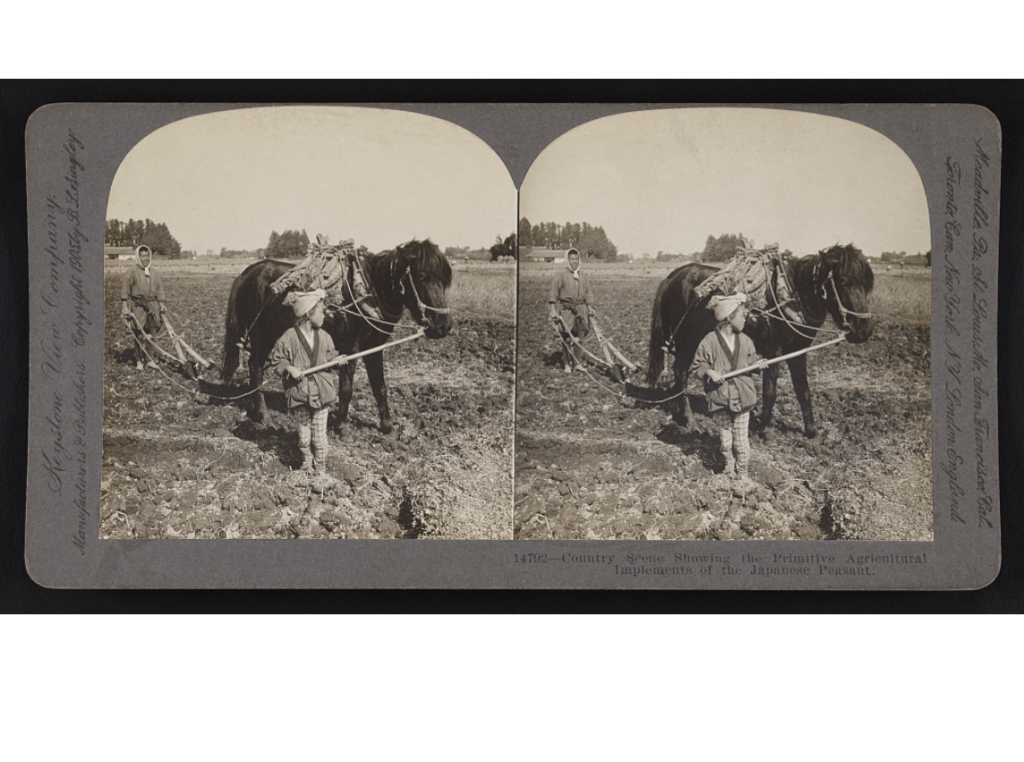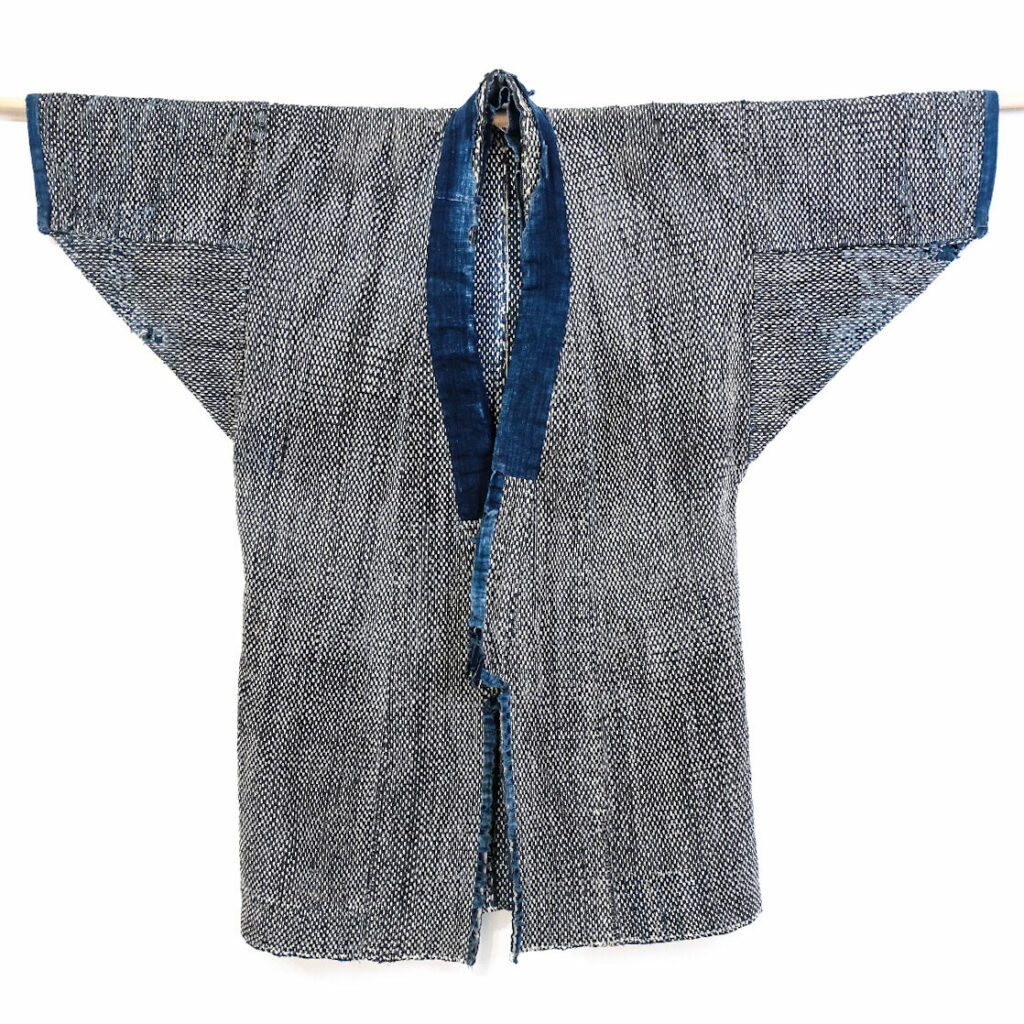Noragi is farmwear. This coat is patterned on a traditional farmer’s jacket which were designed to be created out of plant fibers (primarily hemp) using minimal waste of fabric when cutting and simple to sew by hand. The coat will be cut out of blue cotton dobby, will most likely be unlined, and will be covered with sashiko stitching. Stitching will be by hand using the japanese ushin stitch (which is used both for assembling clothing and doing sashiko… although they’re different techniques).

An extant garment in the collection of the Tatter library in Brooklyn NY shows a farmer’s coat that has been entirely covered in lines of sashiko stitching. The design of the coat shows that its made out of simple shapes, squares and rectangles. This is very similar to other coats such as hanten and is remarkably similar to the layout for a tudor era shirt. I suppose this isn’t very surprising as using squares and rectangles are the most efficient shapes you can get for fabric usage on a piece of cloth.

 The pattern itself can be broken down into simple shapes. I will make use of the How to Make Your Own Japanese Clothes book for doing measurements as it has a complete chart of how to measure the body to make up a pattern. As with sashiko there are very limited English resources on wasai (which I’m not sure is kimono tailoring specifically or tailoring for japanese garments in general) and this appears to be the only book in English that provides a background on traditional japanese sewing techniques as well as guidance on how to adopt these to western materials.
The pattern itself can be broken down into simple shapes. I will make use of the How to Make Your Own Japanese Clothes book for doing measurements as it has a complete chart of how to measure the body to make up a pattern. As with sashiko there are very limited English resources on wasai (which I’m not sure is kimono tailoring specifically or tailoring for japanese garments in general) and this appears to be the only book in English that provides a background on traditional japanese sewing techniques as well as guidance on how to adopt these to western materials.
I do plan to hand sew this (if I have the hand strength to get through the seams) using the ushin stitching technique as this was traditional. Ushin uses a running stitch which is applied using a rapid back and forth motion which pushes the cloth onto the needle rather than pushing the needle through the cloth. The use of the running stitch to piece garments in Japan was widespread as it allowed the thread to break before the fabric did when the garment came under stress.
Fabric itself held the value in a garment, not the labor to produce it. This was true in western garments as well until the rise of industrialization. Its also the reason that extant garments are difficult to find prior to industrialization except at the very high end of society, the labor to construct a garment was far cheaper than the material so it made economic sense to have clothes taken apart and remade.
Japanese fabric is generally 36-40cm in width or about 14-16 inches which is why a back seam is included in all adult sized garments. As I’m using western fabric I will not include the back seam as Mood Fabric sold their indigo cotton dobby in 66″ wide bolts. Cutting the fabric to create a back seam would weaken it and that’s not the point of the garment.
The next part is the sashiko stitching. I haven’t settled on the pattern for this but have time before I need to make any decisions. The stitching will be done before the garment is sewn together as its easier to handle a flat piece of fabric than working around the edges of a finished garment. I found that one out the hard way in my first extended sashiko projects.
Resources: KirkoMade.com ShurenProjects.com. Tatter.org. Minneapolis Institute of Art. Billy Matsunaga. Making & Candor. How to Make Your Own Japanese Clothes.